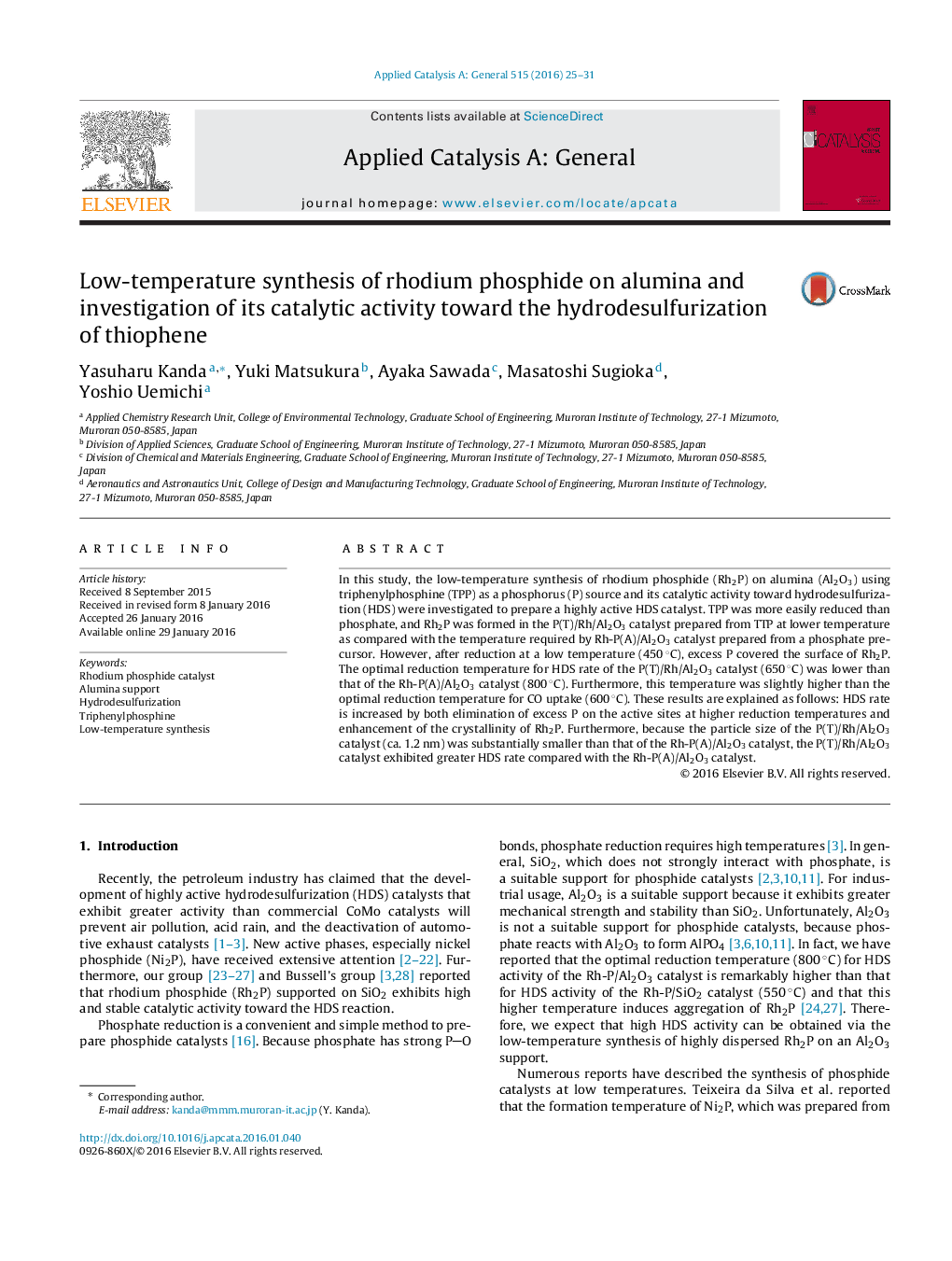| Article ID | Journal | Published Year | Pages | File Type |
|---|---|---|---|---|
| 38859 | Applied Catalysis A: General | 2016 | 7 Pages |
•The formation temperature of Rh2P can be remarkably decreased through the use of triphenylphosphine as a P source.•After reduction at lower temperatures (below 450 °C), excess P covered the surface of Rh2P.•The P(T)/Rh/Al2O3 catalyst exhibited higher hydrodesulfurization activity than the Rh-P(A)/Al2O3 catalyst.•Small Rh2P particle can be prepared from triphenylphosphine.
In this study, the low-temperature synthesis of rhodium phosphide (Rh2P) on alumina (Al2O3) using triphenylphosphine (TPP) as a phosphorus (P) source and its catalytic activity toward hydrodesulfurization (HDS) were investigated to prepare a highly active HDS catalyst. TPP was more easily reduced than phosphate, and Rh2P was formed in the P(T)/Rh/Al2O3 catalyst prepared from TTP at lower temperature as compared with the temperature required by Rh-P(A)/Al2O3 catalyst prepared from a phosphate precursor. However, after reduction at a low temperature (450 °C), excess P covered the surface of Rh2P. The optimal reduction temperature for HDS rate of the P(T)/Rh/Al2O3 catalyst (650 °C) was lower than that of the Rh-P(A)/Al2O3 catalyst (800 °C). Furthermore, this temperature was slightly higher than the optimal reduction temperature for CO uptake (600 °C). These results are explained as follows: HDS rate is increased by both elimination of excess P on the active sites at higher reduction temperatures and enhancement of the crystallinity of Rh2P. Furthermore, because the particle size of the P(T)/Rh/Al2O3 catalyst (ca. 1.2 nm) was substantially smaller than that of the Rh-P(A)/Al2O3 catalyst, the P(T)/Rh/Al2O3 catalyst exhibited greater HDS rate compared with the Rh-P(A)/Al2O3 catalyst.
Graphical abstractFigure optionsDownload full-size imageDownload high-quality image (138 K)Download as PowerPoint slide
